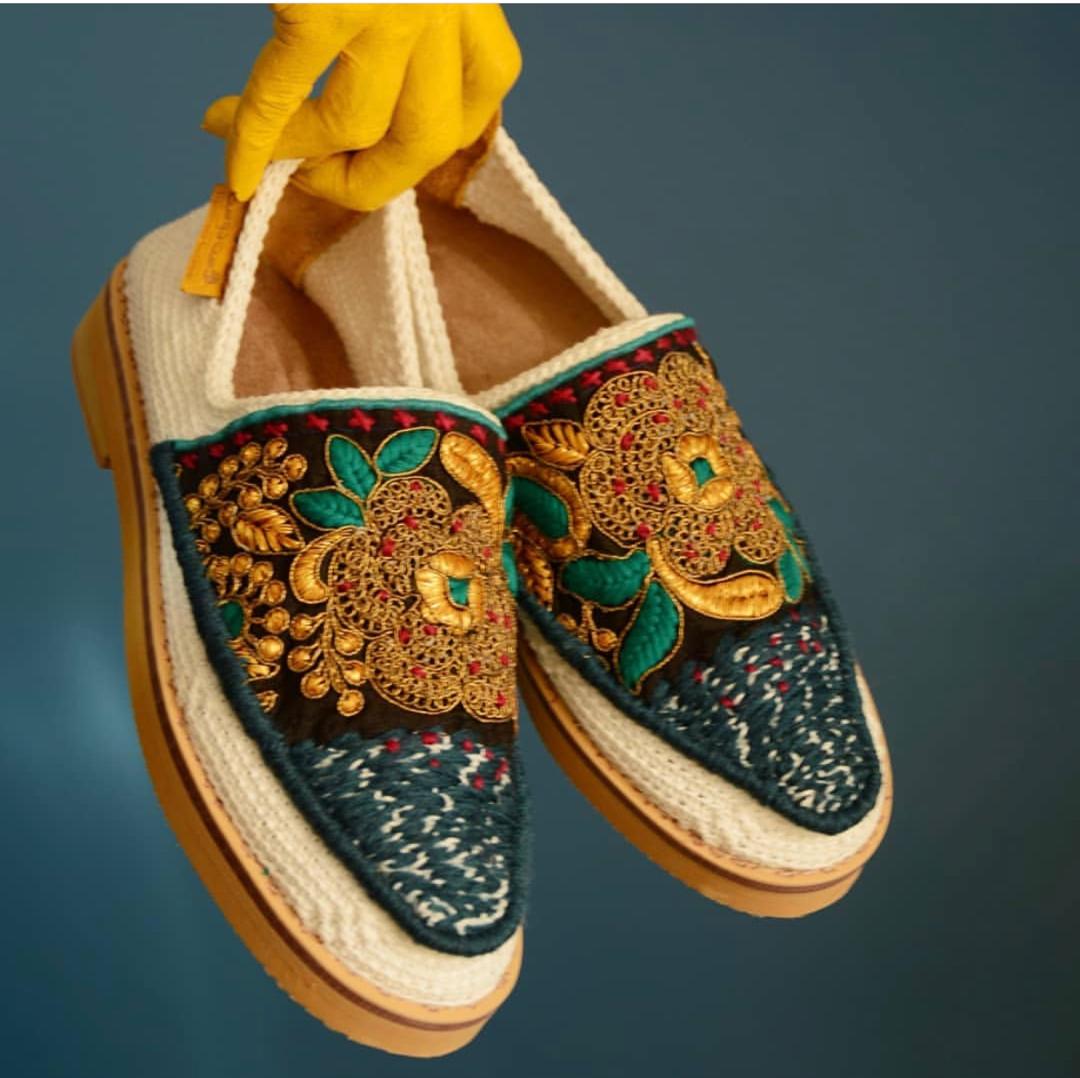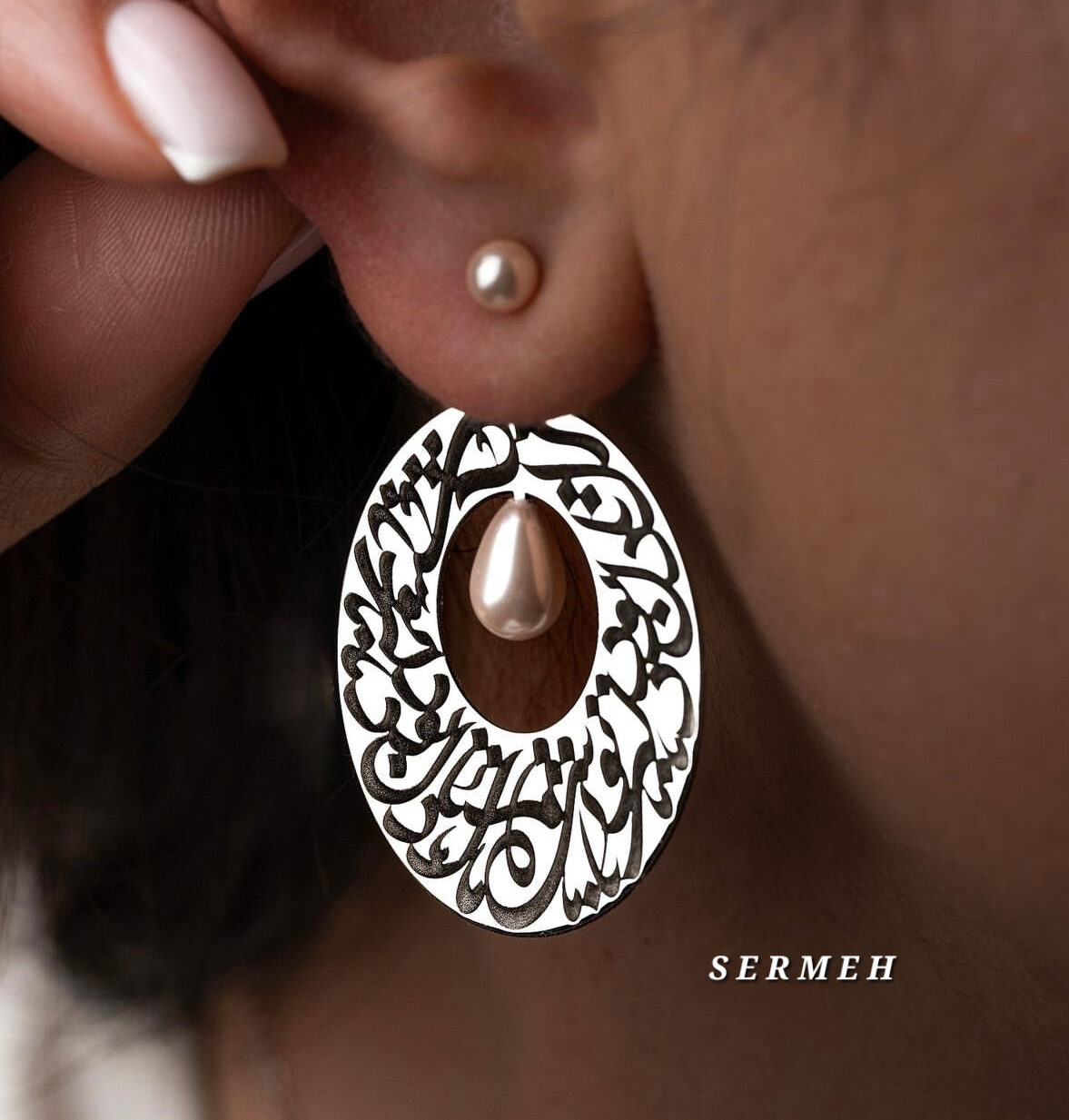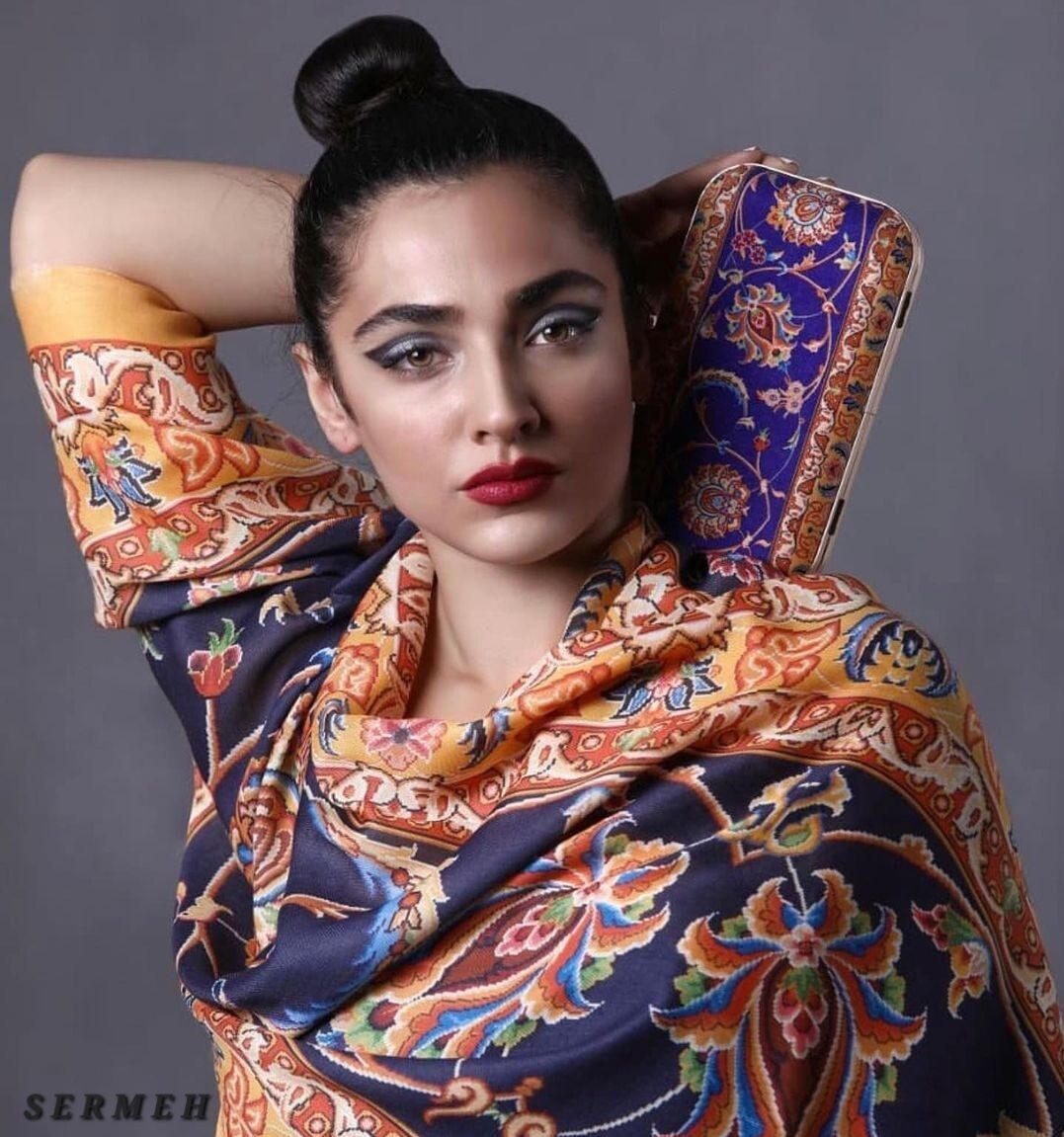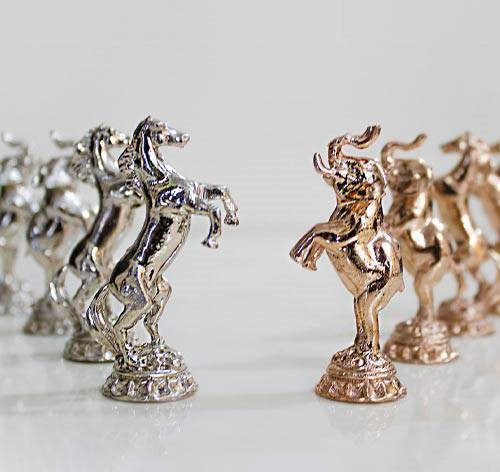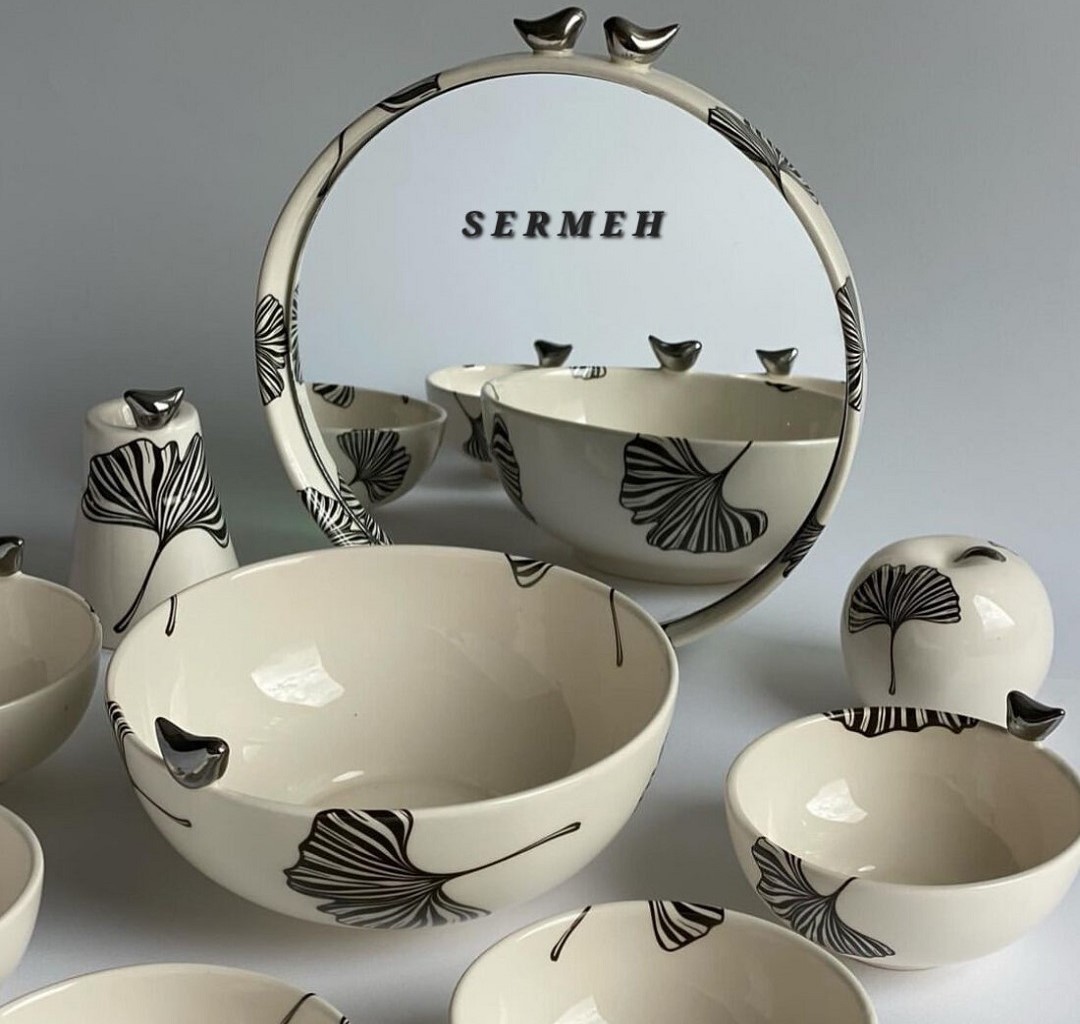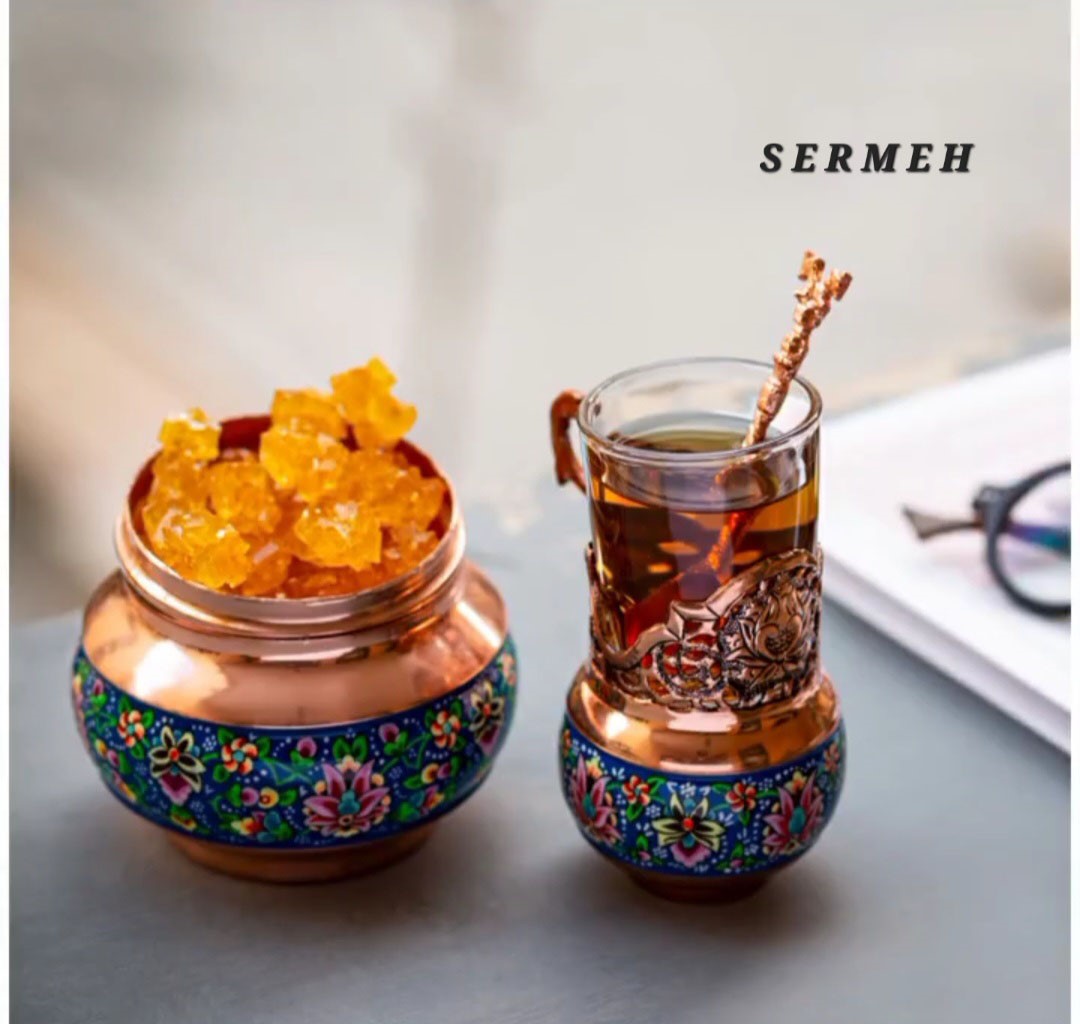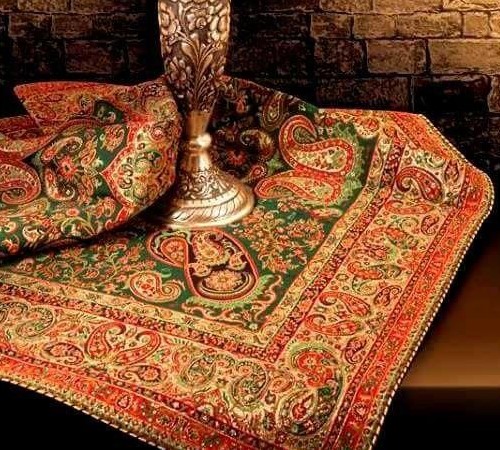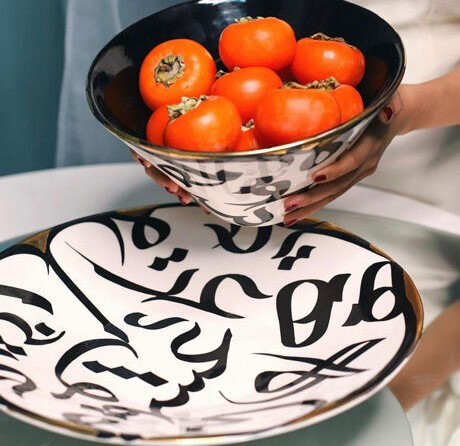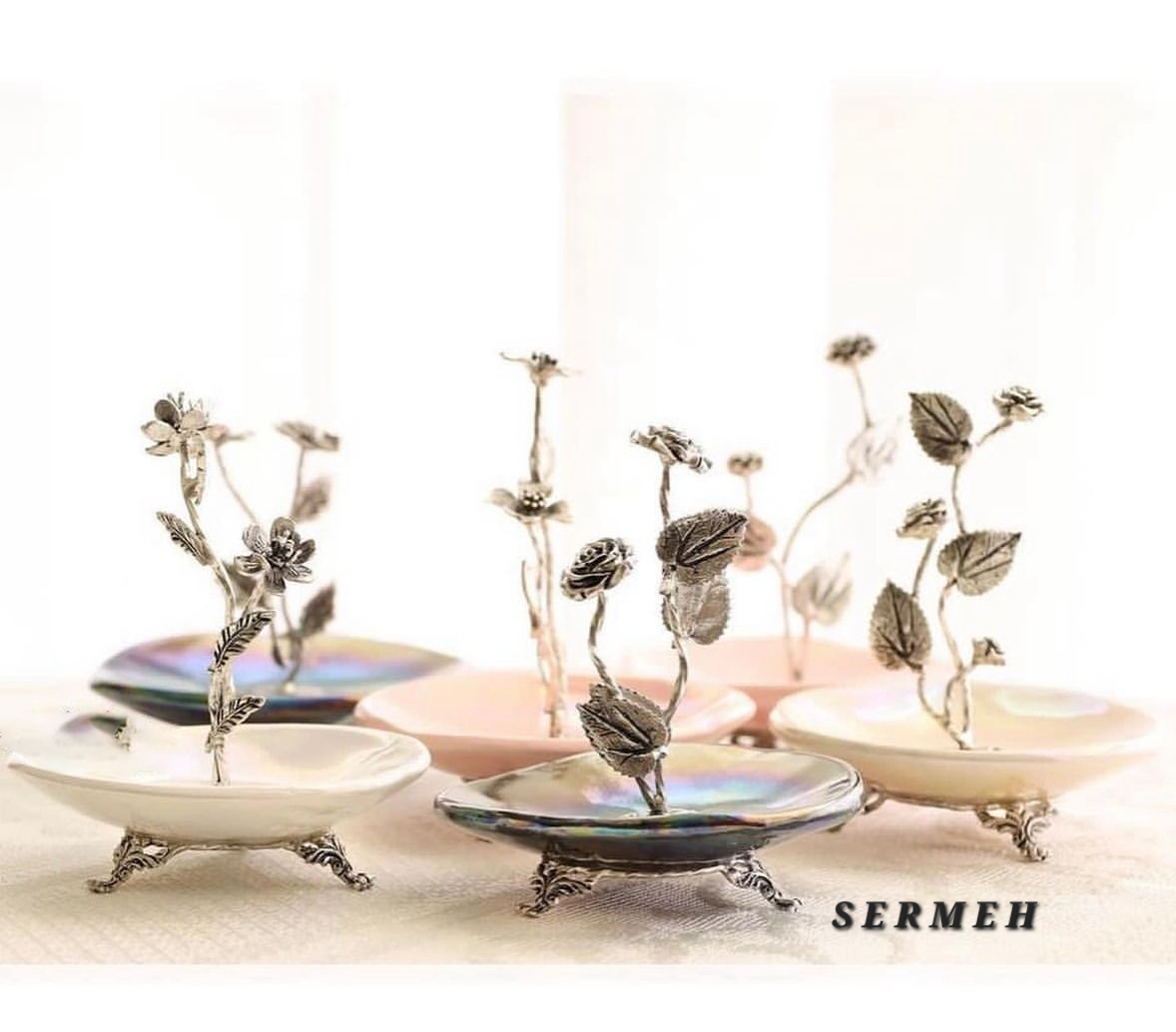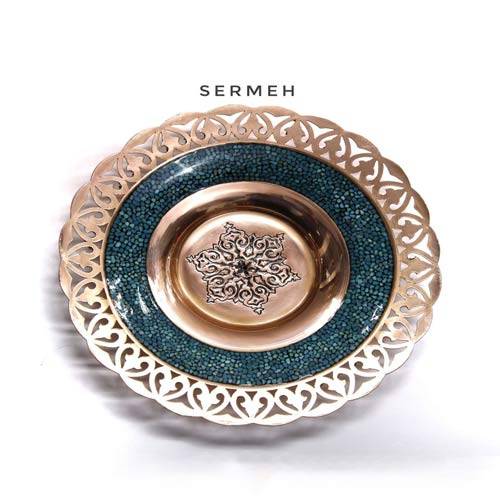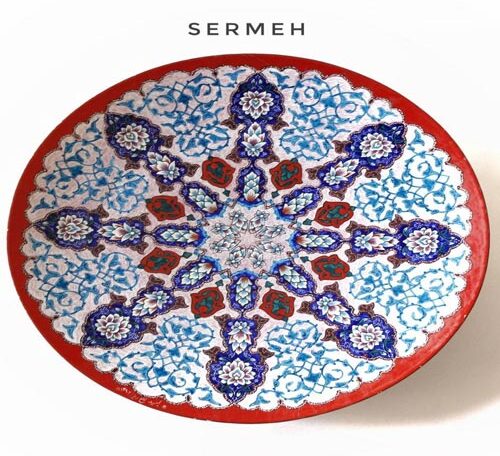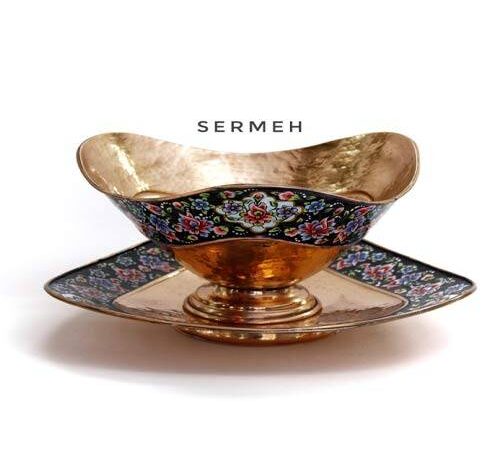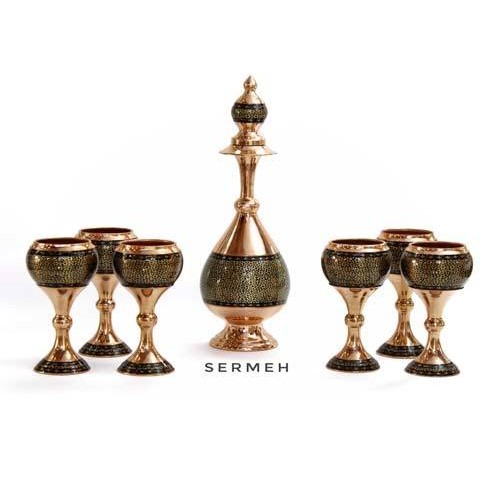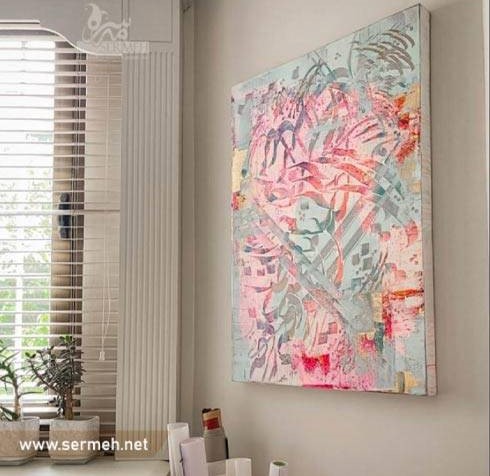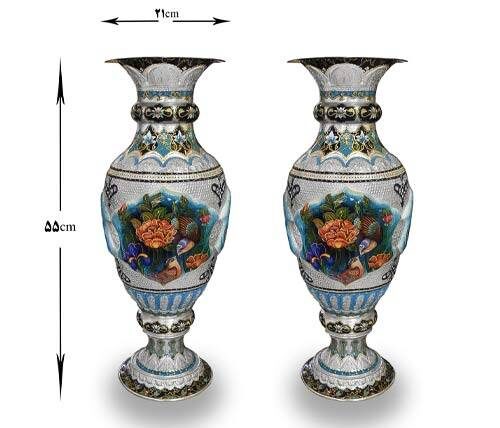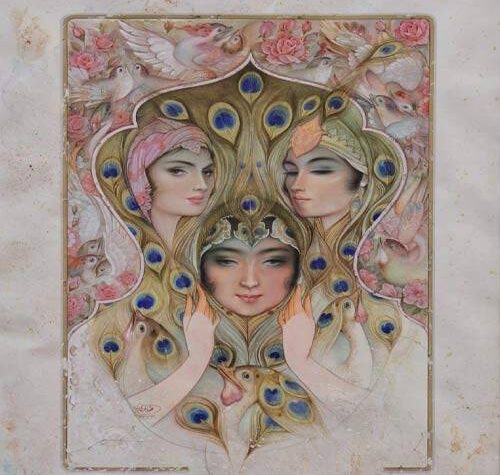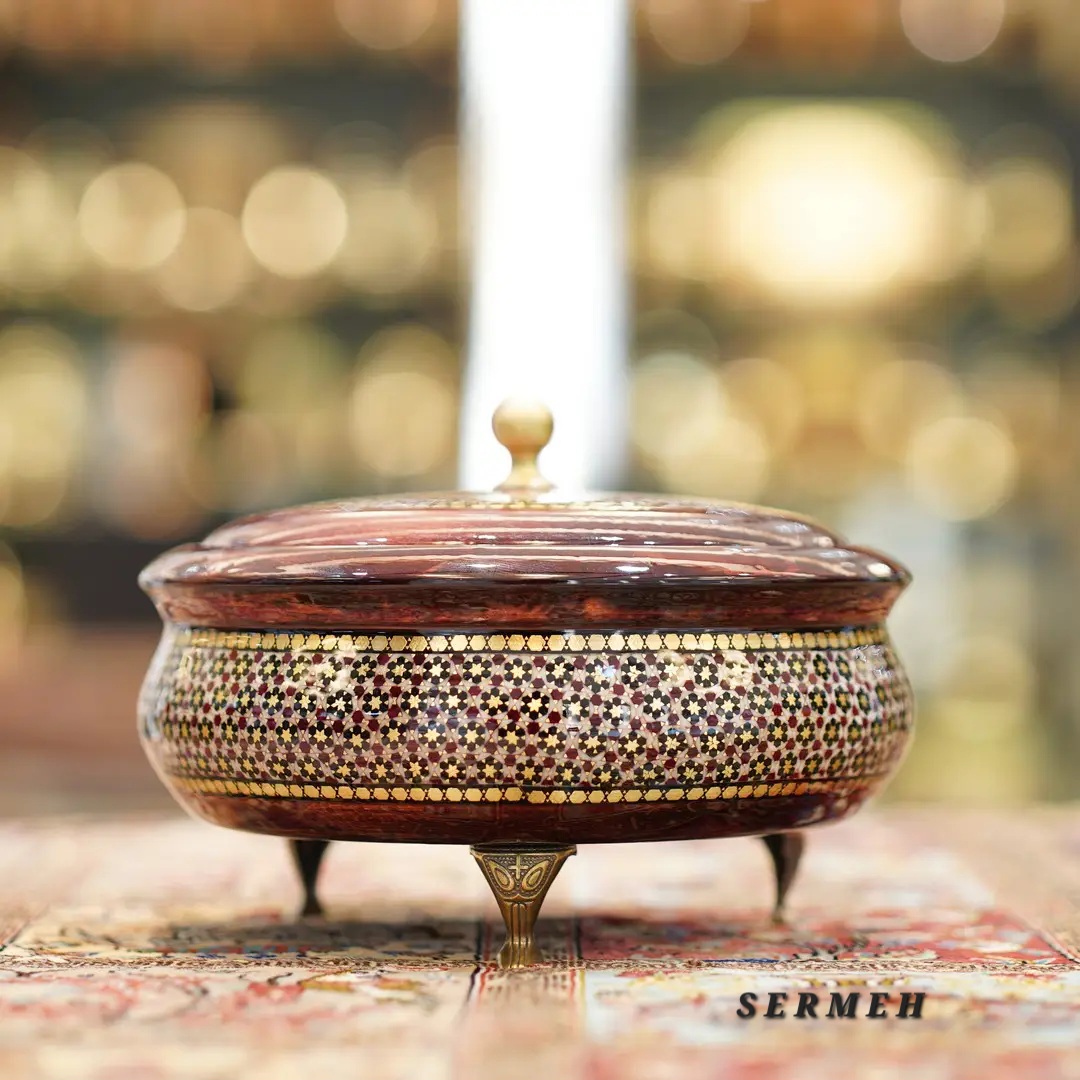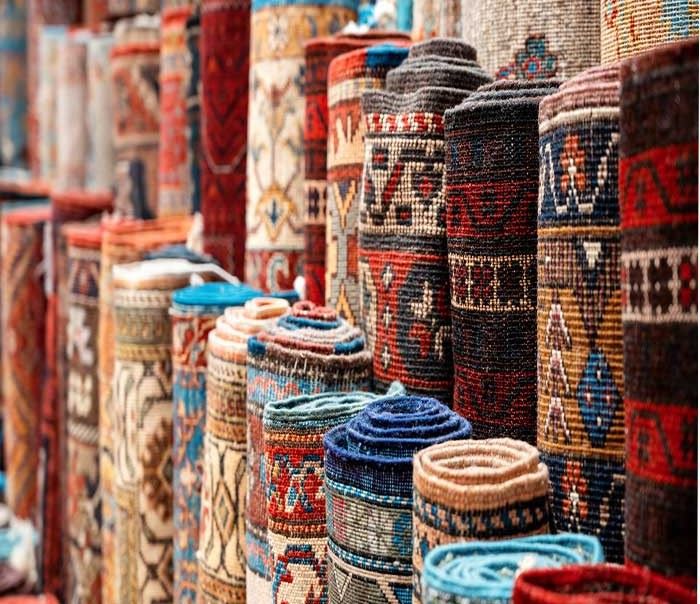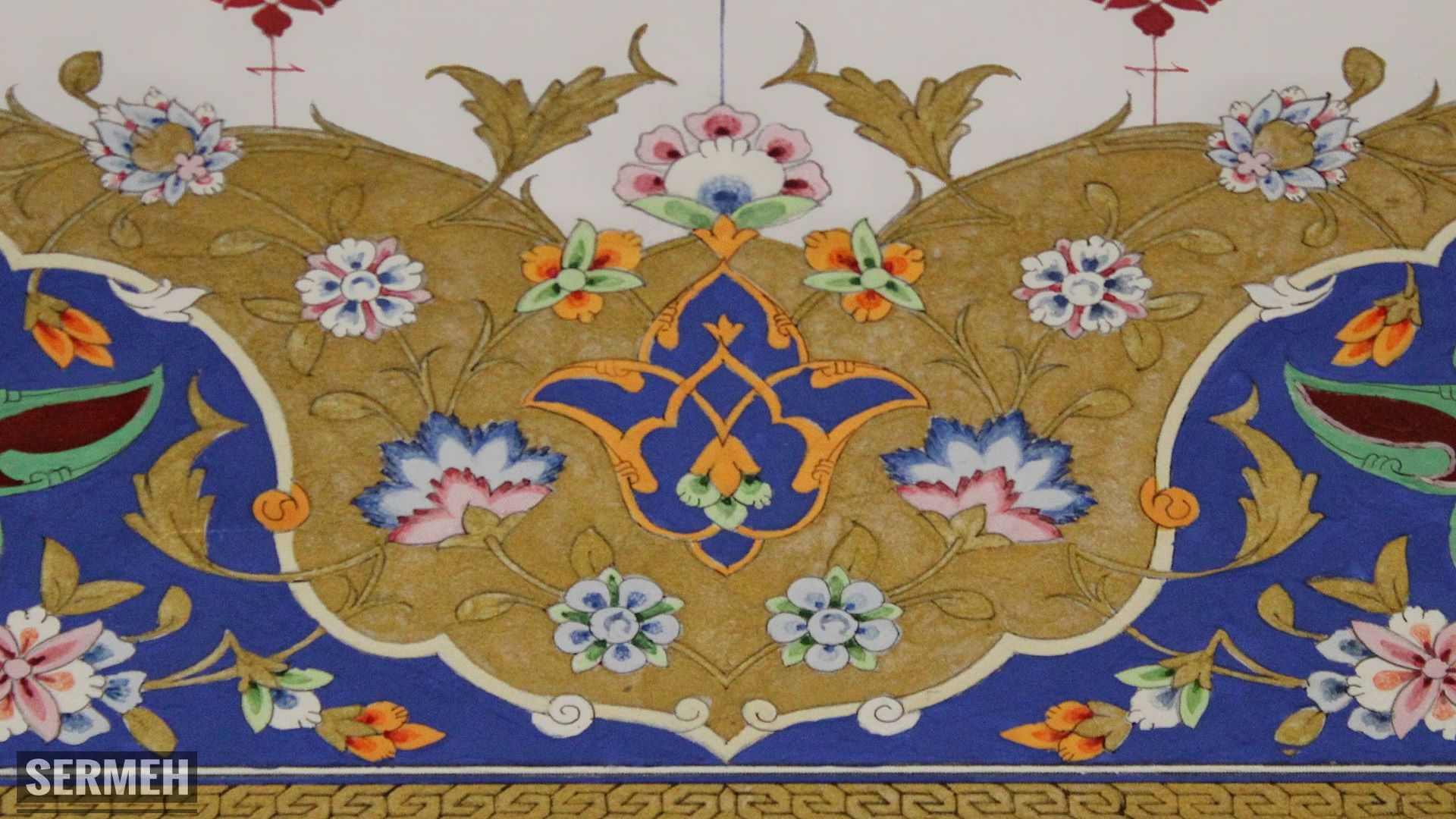Tazhib Art
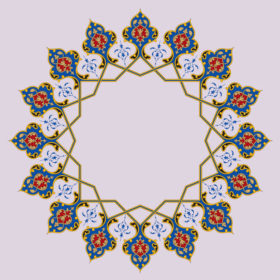
Tazhib
Tazhib (gilding) is an Arabic word that has been derived from “Zahab”. “Zahab” means gold and Tazhib means gilding and adding golden shine to margins and surfaces. Tazhib means gilding; It is the art of gilding book pages, calligraphy pieces, and margins of paintings, especially pages of the Holy Quran.
This art was popular before Islam as well and was called goldsmithing (Zarnegari) then. After the advent of Islam, it was used in Iran to decorate Qurans. The calligraphic and gilded Qurans of the early centuries of Islam are similar to the decorative paintings of the Sassanid period.
It can be considered a collection of original and beautiful drawings that painters and craftsmen use to beautify religious, scientific, cultural, and historical books, poetry collections, art collections, and beautiful pieces of calligraphy.
What are the characteristics of Tazhib Art?
Tazhib, like painting, has special schools, which may be one of the distinguishing points of this art. Among the schools of gilding, we can mention Seljuki, Bukhara, Teymuri, Safavi, and Qajar. Their differences are evident in the method they put patterns together. For example, Tazhib in Bukhara school can be easily distinguished from the other schools. The former makes use of black and other dark colors while such colors are not used in other schools.
Therefore, we can conclude that different periods of Tazhib express the different spirits of people who lived then. Here we can have a review: In the fourth century, it was simple; it was more coherent in the fifth and sixth centuries; glorious and powerful in the eighth century; and very delicate and luxurious in the ninth and tenth centuries after Hegira.
This art can be used both independently and with miniatures, poultry flower-style painting, and calligraphic lines. In addition, this art can be seen independently in tiling, engraving, and inlaying.
In the Safavi era, Isfahan became the center of the art of tazhib and calligraphy; and in this center, using the colors of gold, yellow, and white, they made beautiful changes in this art. Its tools include a brush, ruler, goniometer, and nut.
The impact of Iranian Tazhib on other countries
The artworks of past centuries in this field, clearly show the impact of Persian Tazhib on that of other countries like India, the Ottoman Empire, and Arab countries. When we look at the illuminated manuscripts of recent times, we can find the salient effects of the Iranian tazhib in other countries as well such as India, Turkey, and other Arab nations.
Iranian artists who immigrated to India in the early Safavi era, founded Iranian and Indian painting schools. The artworks belonging to the Mughol dynasties in India are brilliant. This indicates that they were a continuation of Iranian and Indian painting schools.
It was the Iranian artists who transferred the art to the Ottoman Empire and founded an independent school there. Ottoman Turks were not skillful in Tazhib, and it can be said that this art collapsed in Arab countries once Iranian artists left them.
The art of Iranian Tazhib has no equivalent in the world. Europeans have their style of gilding, which is quite different from Iranian art. Europeans used stalks of vine trees and colourful leaves in gilding and sometimes added birds, animals, human faces, and natural sceneries.
Artistic productions of the Teymuri era
Artistic productions of the Teymuri era are one of the most important artistic works. The Teymuri dynasty encouraged artists and made it possible for them to develop the art of writing books. Sultan Baysongor Bahador Khan was the largest and most important member of this dynasty. This king was an artist himself, who loved to learn the techniques of inscription, calligraphy, illuminated works, and painting.
So he brought many artists from all over the Teymuri Empire together and founded a library in Harat. He decided to create an artistic production center for writers, cartographers, calligraphers, illuminators, bookbinders, painters, etc. Today, the religious books which were made in this city in that era, are among the most precious and beautiful books that have been produced so far.
The Qurans that were produced in that period -belonged to Shahrokh and Baysongor- were among the finest Tazhib artworks. Gold and lapis lazuli were the main materials that were used to decorate and illuminate the books and the Quran.
What are the differences between today’s Tazhib and its past?
In the contemporary era, we are faced with two types of this art. The first type whose artists adhere to the traditional principles of this art. The works of this group have become more diverse in form than in the past, but deconstruction has not taken place. The motifs, elements, bird patterns, flowers, and plants are the same; but the designs and colours have changed a lot.
But in the second type, there is a different view that can be promising in the future. What happened in Iranian painting is now happening in Tazhib. These movements may still be individual, but we hope that the position of this art will be strengthened among the art lovers in this field and a new style will be invented in it.
nowadays the number of artists in this field is limited; But this small number, with sufficient mastery, skill, and creativity, have been able to transform and show remarkable innovations.
Iranian painting (Negargari)
The art of Tazhib is one of the branches of Iranian painting (nagargari). In book decoration, this art is used both independently and it can be also used along with poultry flower-style painting and calligraphy. Sometimes this art is used as carving on metals and utensils in the form of engraving, tiling, and inlaying.
In the first centuries after Islam, calligraphers themselves were responsible for decorating their works. However, over time, the work was divided among the artists. First, the calligraphers did their work. they wrote the texts of the book or the Quran, then left space for Tazhib on the blank pages for the other artists to decorate.
Tazhib and Negargari products
Different patterns
There are three categories of patterns used in Tazhib:
- Islamic motifs
- Khatai motifs
- Tasheer or Poetry
Islamic motifs: These designs are composed of geometric and regular lines. It is named Islamic motifs because it was inspired by the “Kufi script”.

Islamic motifs
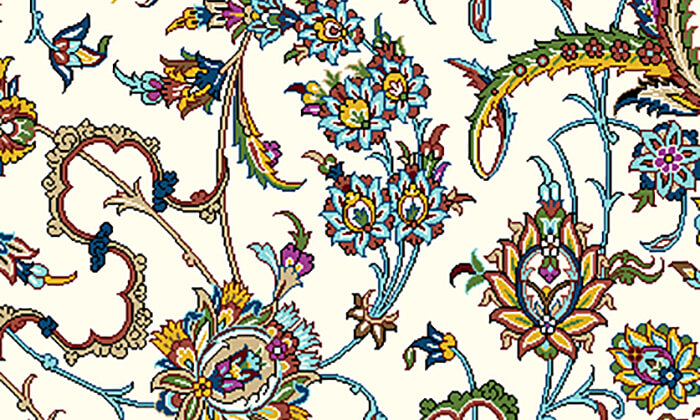
Khatai motifs
Khatai motifs: It is composed of intertwined stems, leaves, and flowers in a spiral shape with special colors and is also known as flower and shrub designs. Khatai motifs became popular from the sixth-century hegira onwards. These intricate leaves and flowers were used during the Seljuki period to decorate mosques in the cities of Isfahan, Qazvin, and Yazd.
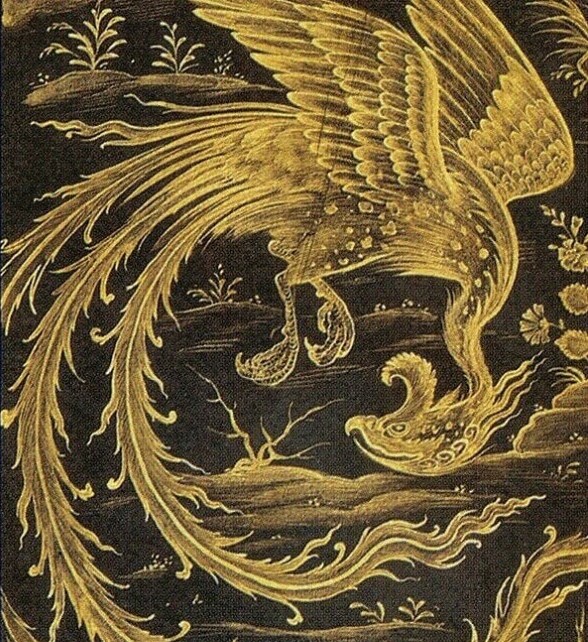
Tasheer or Poetry
Tasheer or Poetry: or “dreaming” is a combination of Islamic and Khatai motifs in addition to the use of images of birds, animals, natural landscapes, and human figures; Which was invented during the Teymuri period.
In Tasheer, mythical birds such as phoenixes animals such as lions, leopards, and deer, and some mythical animals such as dragons are widely used. The most important type of it is called ” the clash ” which depicts the conflict of different animals with each other.
Limited colors are used in tasheer and gold is the predominant color. It should be noted that patterns that have the shape of animals are not used in the Quran.
The paints used in this art
- Herbal paints
- Mineral paints
- Chemical paints
Herbal paints: walnut skin, tea, henna leaves, Arabic gum, etc.
Mineral paints: gold, silver, azure, Shangarf (natural sulfur of mercury with the formula HgS, which consists of two elements “sulfur” and “mercury” and is red or brown), white tin, rust (grayish green or bluish green), syringe (lead tetroxide red), brass (a combination of copper and zinc), arsenic (green and black) and oxide of other metals.
Chemical paints: oil paints, gouache, and watercolors.
Appearance of this art
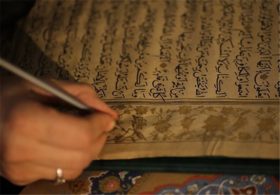
Quranic manuscripts
The beginning of this art belongs to the Sassanid period, which can be seen in the form of Plastering on the walls and designs on pottery. After the presence of Islam in Iran, this art was used to decorate Quranic manuscripts; and since the Seljuki period, the art of tazhib has been used to decorate buildings, utensils, tools, and other instruments.
During the Teymuri period, the art of Tazhib reached its peak, and artworks were created then, and nowadays adorn the museums of Iran and the world.
The heyday of the art of Tazhib
The flourishing of this art begins in the early centuries of the Islamic era. Just as the art of calligraphy was popular, this art as well became popular among art lovers. So in different parts of Iran, especially in Khorasan, centers were established to educate those interested in this field of art; and these centers made this art an independent field of art.
In these designs, flowers and birds are like two lovers in a romantic debate. The bird is in love and the flower is the mistress. These romantic debates have been mentioned many times in Persian literature.
In the past, Tazhib was more in the service of calligraphy and painting; and less independent in paintings. In other words, this sacred art of Iran has been in the service of book decoration. Certainly, a book of several hundred pages without any pattern or color is boring for its viewer and reader. So this is where the art of Tazhib comes into play.

